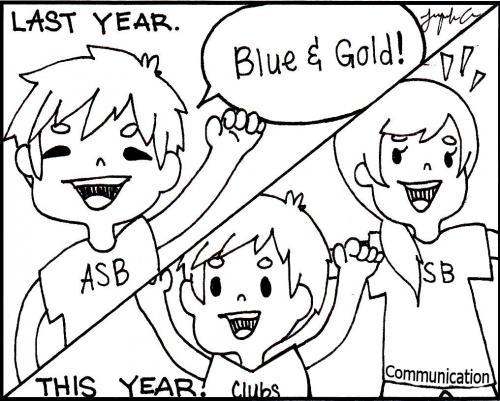ASB 2014: ‘Reaching Out to Moor’
SUSANNA AIGA
Opinions Editor

There are two types of students on campus — one group focuses on individual excellence and the other also focuses on excellence of the community. The second type of student consists of members of the Associated Student Body (ASB). On a typical weekday, members of ASB can be seen working around campus, from helping freshmen find their classes to setting up activities in the quad. Last year, ASB’s main goal was to influence all of Alhambra High to spend every waking and sleeping hour in shades of blue and gold. This year, ASB still intends to build upon school spirit, but their more immediate focus is to personally reach out to students.
To reach out to more students, ASB has to effectively communicate with the student body. Last year, the bulletin went paperless, provided in the form of a video broadcast as well as a readable version on the newly improved website. It was not the method of the bulletin that would make the difference, but rather the simple question of whether or not students actually received the messages. Giving the students the bulletin in class is the most effective way to keep them up to date, but many teachers neglected to keep up with this responsibility. ASB plans to improve communication and involvement with teachers, and if this is successful, teachers will communicate more with their students, who can then become more involved in school activities.
Additionally, in a technologically advanced society, communication through social media is the most logical approach to mass-inform students. ASB is increasing their use of Facebook, Instagram and Tumblr as well as the timeless method of posting fliers across campus. If ASB can effectively promote their social media outlets to increase their “likes” and “followers,” the problem of communication should be absolved as a thing of the past.
Involvement in clubs has declined in past years, and ASB plans to stress the importance of leadership to club presidents during Inter Club Council meetings this year. They believe that if current leaders can inspire the underclassmen in their clubs, then clubs will be less likely to “die out.” However, even if ASB is successful in prompting leaders to focus on raising club spirit, underclassmen may still be unwilling to step up to leadership positions. ASB’s commitment to student participation on campus is commendable, but it is ultimately a student’s decision whether they will invest in their club.
ASB has many ideas and plans for this upcoming year in terms of boosting communication and school spirit, but whether or not they will be effective still remains to be seen.